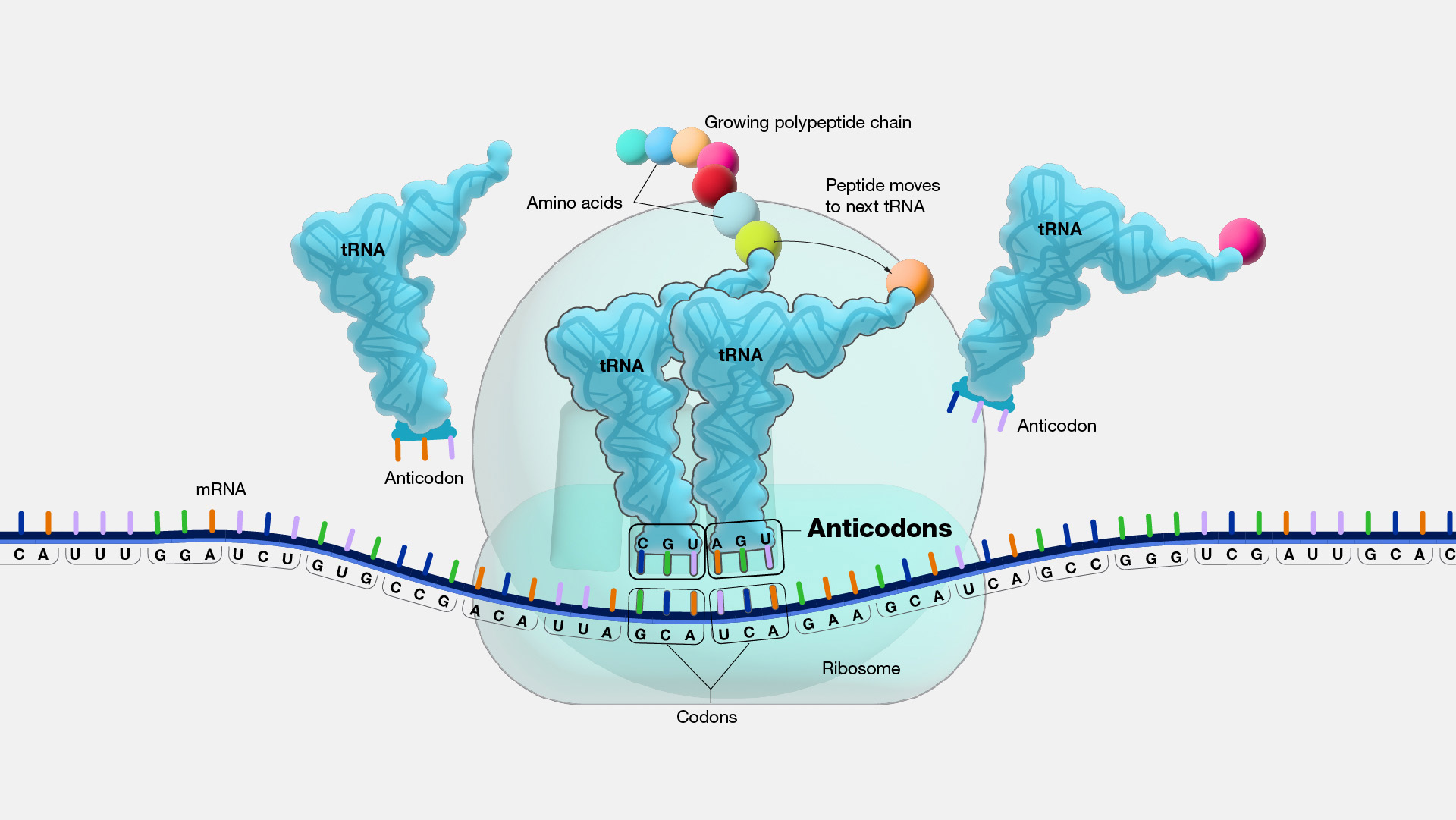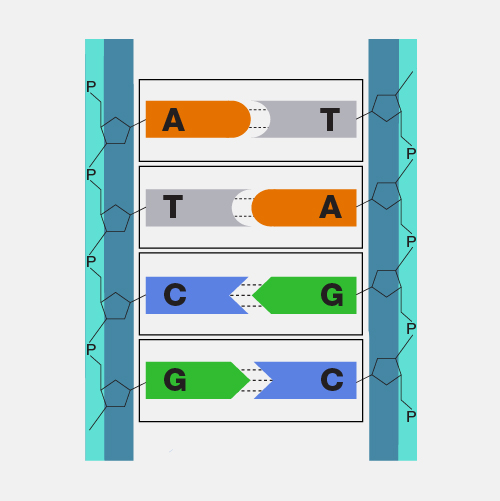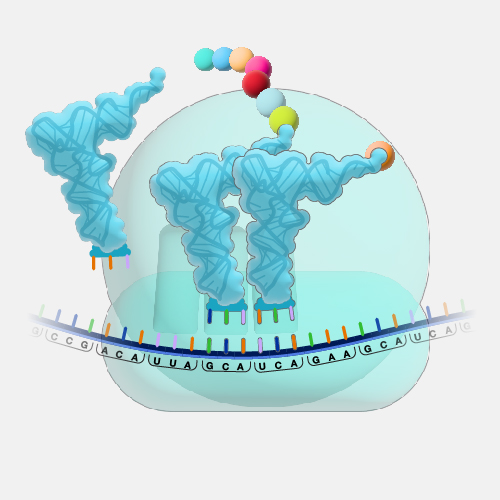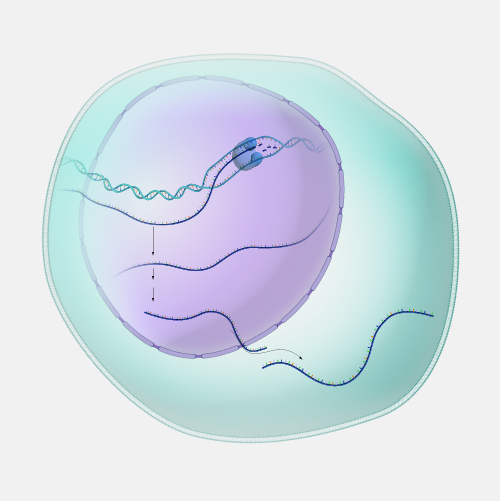
Anticodon
Definition
A codon is a DNA or RNA sequence of three nucleotides (a trinucleotide) that forms a unit of genetic information encoding a particular amino acid. An anticodon is a trinucleotide sequence located at one end of a transfer RNA (tRNA) molecule, which is complementary to a corresponding codon in a messenger RNA (mRNA) sequence. Each time an amino acid is added to a growing polypeptide during protein synthesis, a tRNA anticodon pairs with its complementary codon on the mRNA molecule, ensuring that the appropriate amino acid is inserted into the polypeptide.

Narration
Anticodon. So, DNA and the corresponding messenger RNA are made up of a series of bases. In RNA, these bases are often labeled with the letters A, U, C, and G. A set of three bases makes up a codon. Each codon instructs the cell to add a specific amino acid to the growing protein chain. Every base naturally pairs with a complementary or matching base. So A always pairs with U, and C always pairs with G. When a protein chain is being formed, amino acids are added in a specific order according to the sequence of bases on the messenger RNA. The machinery responsible for adding amino acids reads through the messenger RNA. The next three bases in the messenger RNA sequence, the next codon, are temporarily paired with a transfer RNA molecule that contains the anticodon sequence made up of the matching bases. For instance, a messenger RNA codon GCA matches with the transfer RNA with the anticodon CGU, which carries with it the amino acid called alanine. That alanine is then added to the growing protein chain.




